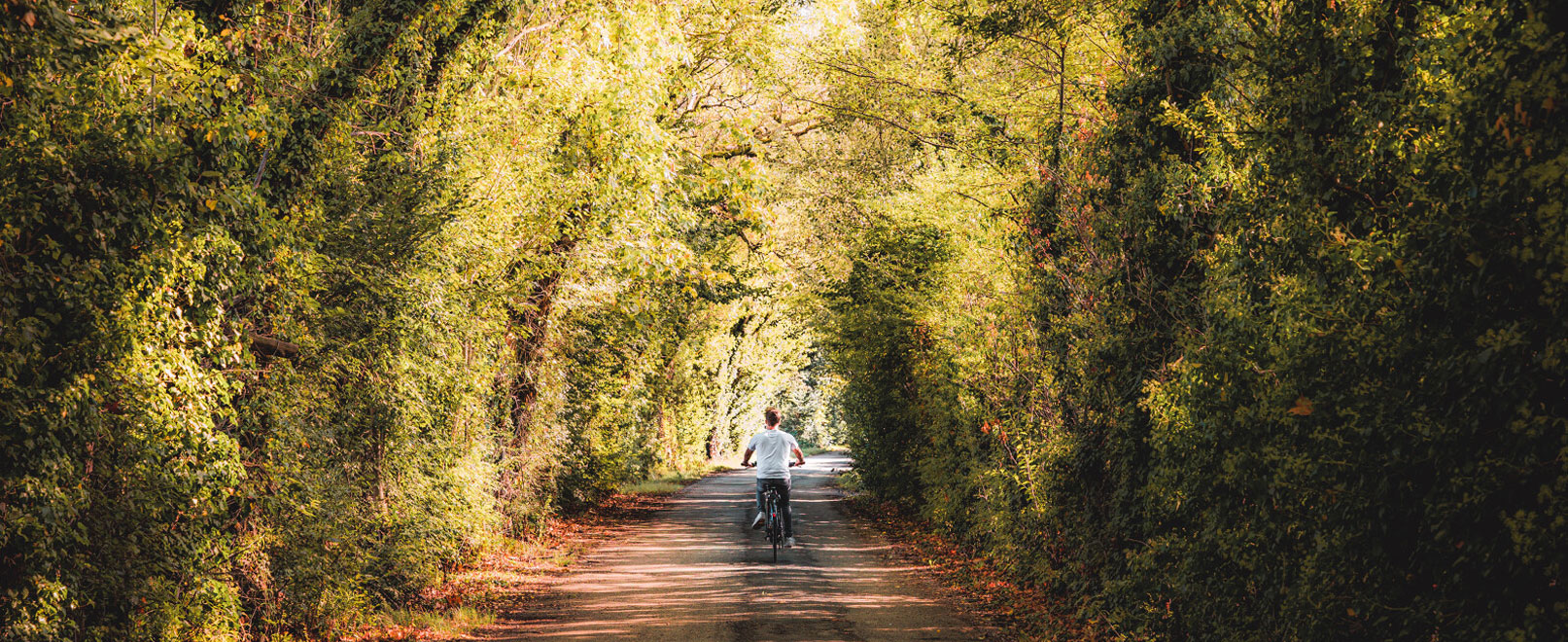72 hours of slow travel: discover Avignon and L’Isle-sur-la-Sorgue
using sustainable transport, with the Vaucluse Provence Pass
Day 1 : Exploring Avignon
After coming into the Avignon TGV station, change platform and take the « Virgule », the TER (Regional Express Train) which links the TGV station to Avignon centre. Getting to Avignon takes 2 hours 40 minutes from Paris, 2 hours from Lyon, 40 minutes from Marseille and 1 hour from Montpellier.
In the morning, you’ll get to know the “intra muros” part of the city (the area within the city walls), made up of narrow winding streets and quaint little squares. In particular, you might want to take a look at the market known as Les Halles, or check out local artisan boutiques along Rue des Fourbisseurs, including Numéro 35 and L’élémentaire. Aesthetes should head to the picturesque Rue des Teinturiers, before circling back to the beautiful townhouses that are home to the immense Contemporary Art Collection of Yvon Lambert (which you can visit with your Vaucluse Provence Pass).
Lunch at Violette : located in the Lambert Collection courtyard, this restaurant serving Franco-Asian cuisine is a peaceful haven in the city centre.
In the afternoon, discover the great history of this little provençal city; listed as a UNESCO world heritage site, Avignon is home to the Palais des Papes, which you can learn about via a 2-hour guided walking tour with the Office de Tourisme (setting off at 2 :30 pm on Saturdays from 1st October to 31st December).


Day 2 : l’Isle-sur-la-Sorgue
In the morning, take the TER or the 906 bus to get to l’Isle-sur-la-Sorgue: the antique capital and the Venice of Vaucluse (24 minutes by train or 35 minutes by bus).
Here, the sound of flowing water is never far away. Scour different villages for antique dealers, enjoy the Sunday morning market and browse designer stores along the vibrant streets.
Agastache, which opened in 2022, is an ideal lunch spot. They take pride in using local, plant-based products and relying exclusively on organic and sustainable agriculture, making their dishes eco-friendly as well as delicious.
In the afternoon, choose from an array of options included with the Vaucluse Provence Pass :
Visit la Filaventure : this sensory museum, conceived by Brun de Vian Tiran, one of the oldest spinning mills in France, displays the 15 stages of producing woollen cloth. Open all year round.
Explore Villa Datris, an art centre dedicated to contemporary sculpture and high-quality temporary exhibitions. Free entry, open from May to November.
In the evening, take the train back to Avignon.
Day 3 : Discover the other side of the Rhône
In the morning, hire bikes from either Provence Bike, near the station, or South Bike Spirit which is closer to Pont Daladier and head towards the lungs of the city : l’île de la Barthelasse, on the Rhône. From here, you have a breathtaking view of the city walls, the Pont d’Avignon and the Palais des Papes. Click here for the Île de la Barthelasse bike route.
Cross over to the other side of the river, where you’ll find yourself in Villeneuve-lès-Avignon. Wander round the streets and enjoy an exceptional view over the Papal city from the gardens of Abbaye Saint André (included in the Vaucluse Provence Pass). There is also a weekly flea market that takes place downtown on Saturday mornings. Click here for La rive droite du Rhône bike route.
Have lunch at Emulsion in Villeneuve, serving creative cuisine which experiments with different flavours, in the heart of town.
For those who aren’t keen on cycling, opt for a lunch cruise or a sightseeing cruise with Bateaux de Provence (included in the Vaucluse Provence Pass).
For 1 hour, you’ll get the chance to admire the beautiful monuments of the Cité des Papes, on the water.
After this trip, take the free river boat which will take you back to l’île de la Barthelasse, the largest fluvial island in Europe. The towpath is popular with residents of Avignon for walks, picnics or even taking part in a tai-chi class and the Reboule farm, where you can stock up on fruit and veg, is just around the corner.
You can walk back to Avignon via the Daladier bridge or take the river boat.

©Lezbroz, Kessler, Hocquel, Martelet
